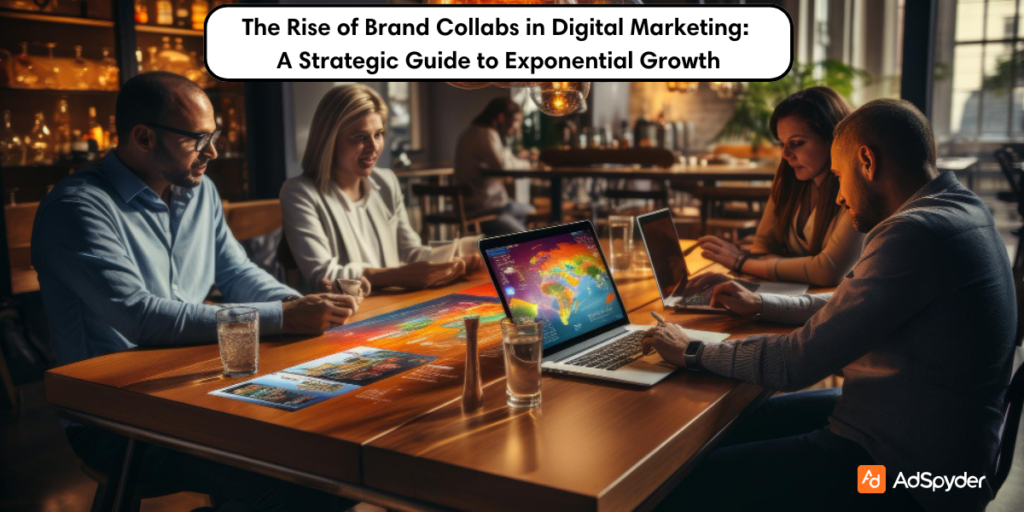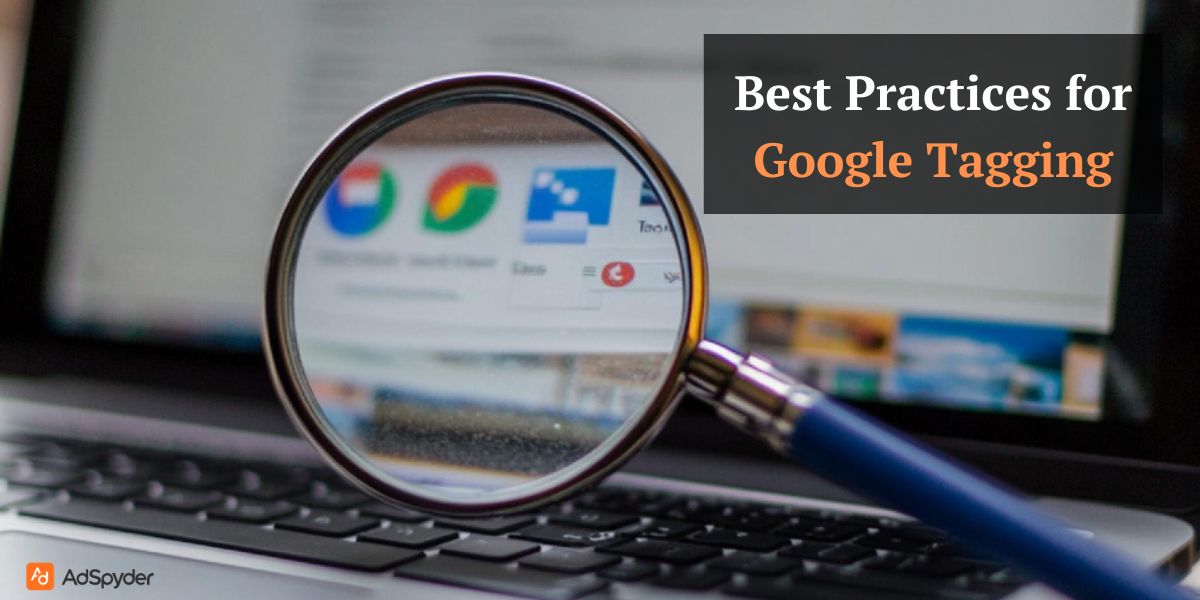The world today thrives on connections and relations. In some places, people try to bring down each other, and in other landscapes, people help rise with the help of each other. Similarly, the landscape of digital marketing thrives on connections and co-branding. This co-branding or brand collabs in digital marketing helps businesses to expose their products to new audiences, amplify brand awareness, and create exciting marketing campaigns. If you’re a business trying to make it into the marketing world, we’re here to guide you.
Ready to Elevate your Marketing Strategy?
In this thorough blog, we’re going to hold your hand as you walk into the world of brand collaborations and digital marketing. With Adspyder, you’re going to explore the driving force behind this trend, all the different types of collaborations, and some strategic steps that you can use to form successful partnerships. We have also handpicked a few real-life examples of how brands have leveraged collaboration to achieve remarkable success.
Why Now? Decoding the Rise of Brand Collabs in Digital Marketing
Brand collaborations in digital marketing have been around for quite some time now. However, recently its demand has been higher than ever. Businesses dip into the pool of collaborations for several reasons; a few of which we have discussed below :
- Audience Saturation: Consumers are bombarded with marketing messages daily. Collaborations offer this fresh perspective that combines brand voices, and grabs attention in a crowded digital landscape.
- Evolving Consumer Preferences: Today’s consumers seek authenticity and experiences more than anything else. Collaborations foster genuine connections and offer unique value propositions that resonate with your customers deeply.
- The Power of Social Proof: Partnering with a reputable brand strengthens your brand image and adds a layer of trust, influencing consumer purchase decisions.
- Reaching New Horizons: Collaborations unlock access to new audiences, allowing brands to expand their reach and acquire new customers efficiently.
- Innovation and Creativity: Collaboration fosters a breeding ground for creative ideas, leading to the development of innovative products, services, and marketing campaigns.
- Beyond Local: Collaboration between brands also provide opportunities to go beyond your location, and spread your wings to new marketing locations. This may not be achieved simply by turning on local ads on Google or other platforms.
By understanding these driving forces, you and your brand can leverage this power of collaboration to achieve your digital marketing goals.
The Power of Partnership: Real-World Examples of Brand Collabs in Digital Marketing
As we discussed before, brand collaboration, in all these years has fueled the success of numerous digital marketing campaigns. Here are a few good examples for you :
- Spotify & Starbucks: This collaboration offered Spotify Premium access to Starbucks customers for a limited time, driving subscriptions for Spotify and increasing customer loyalty for Starbucks. Social media promotions and in-store signage effectively reached both brands’ audiences.
- Lego & Star Wars: This long-standing partnership has yielded countless co-branded Lego sets featuring iconic Star Wars characters and vehicles, capturing the imagination of fans across generations. This strategic marketing campaign across various digital channels has sustained the success of this collaboration.
- GoPro & Red Bull: This collaboration involves athletes sponsored by Red Bull using GoPro cameras to capture their daring stunts, generating thrilling content for both brands. Leveraging social media platforms like YouTube and Instagram, this collaboration has reached a highly engaged audience.
- Dollar Shave Club & Old Spice: This unlikely pairing created a humorous online video series that went viral, boosting brand awareness for both companies and showcasing the power of creative storytelling in brand collaborations.
In all of these examples, you can see that brands from various industries have leveraged collaboration in digital marketing to achieve their objectives, from brand awareness and customer acquisition to fostering brand loyalty and promoting shared values.
The Future of Brand Collabs in Digital Marketing: Evolving Landscape and New Opportunities

The world of brand collabs is constantly evolving, shaped by technological advancements and shifting consumer behavior. This involves numerous trends that you can ride on to achieve your marketing goals. Here are a few :
- Rise of Influencer Marketing: Strategic partnerships with social media influencers can magnify the reach and impact of co-branded products and marketing campaigns. Identifying the right influencers with a genuine connection to your brand and target audience is crucial.
- Data-Driven Collaborations: Leveraging data analytics allows brands to identify ideal partners with highly compatible target audiences, optimizing the effectiveness of collaborations. Data can also be used to personalize marketing efforts within the collaboration. You can also use data to release and advertise whitepapers and ebooks detailing the research that overlaps your niches. This is especially powerful for SaaS and B2B companies.
- Experiential Marketing: Co-creating immersive and interactive experiences can drive brand engagement and build lasting memories for consumers. Utilizing virtual reality or augmented reality technology within brand collaborations can create unique and engaging experiences. You can use these to promote ads for your niches (eg. real estate ads on social media).
By staying abreast of these trends and exploring the possibilities with a creative mindset, brands can unlock the full potential of collaboration to achieve remarkable results in the ever-evolving digital marketing landscape.
Deep Dives: Expanding Your Brand Collabs in Digital Marketing Knowledge
In this section, we’re going to delve into some crucial aspects of brand collabs in digital marketing, going beyond the foundational steps.
Legal Considerations and Best Practices
While collaborating with another business, it’s important to go through these legal considerations :
- Intellectual Property (IP) Protection: A well-crafted collaboration agreement should clearly outline ownership rights for any intellectual property (IP) created during the partnership. This includes co-branded products, logos, marketing materials, and even creative concepts.
- Joint Ownership: If both brands contribute equally to IP development, they can agree on joint ownership with clearly defined usage rights.
- Licensed Ownership: One brand might license its IP to the other for the collaboration, granting specific usage rights for a defined period.
- Independent Ownership: The agreement might stipulate independent ownership of any new IP created, with both brands retaining rights to their pre-existing IP.
- Marketing Compliance: Marketing regulations and consumer protection laws apply to brand collaborations as well.
- Clear Disclosures: Ensure all marketing materials disclose the co-branded nature of the product or campaign.
- Truthful Advertising: Avoid misleading or deceptive claims about the co-branded product or its benefits.
- Data Privacy: Adhere to data privacy regulations when collecting and utilizing customer data during the collaboration.
- Dispute Resolution Mechanisms: Anticipate potential disagreements and establish a clear process for resolving them.
- Mediation: Consider including a mediation clause in the agreement, allowing a neutral third party to facilitate communication and resolve disputes.
- Arbitration: Arbitration can be a faster alternative to litigation, but ensure the agreement outlines the arbitration process and binding nature of the arbitrator’s decision.
Check Out: Trends in Brand Collaborations 2025: What’s New
Overcoming Collaboration Challenges
Any collaboration can be a successful one if you understand and go through some challenges with good knowledge. Here are a few collaboration challenges that one might face :
- Misaligned Brand Image: A significant challenge arises when collaborating with a brand whose image doesn’t align with yours. Here’s how to mitigate it:
- Focus on Shared Values: Emphasize shared values or a common purpose that justifies the collaboration.
- Create a Unique Brand Voice: Develop a distinct brand voice for the collaboration that reflects a blend of both brand personalities.
- Targeted Marketing Strategy: Craft a targeted marketing strategy that focuses on the audience segment where brand alignment is strongest.
- Conflicting Marketing Goals: It’s crucial to ensure both brands benefit from the collaboration. Here’s how to align goals:
- Define Shared Objectives: During the planning stage, clearly define shared objectives for the collaboration (e.g., brand awareness increase,and lead generation).
- Develop Mutually Beneficial Strategies: Brainstorm marketing strategies that contribute to achieving the shared objectives while aligning with each brand’s individual marketing goals.
- Performance Metrics: Establish key performance indicators (KPIs) that track progress toward both shared and individual goals.
- Ineffective Communication: Open and transparent communication is paramount for a successful collaboration.
- Establish Regular Communication Channels: Schedule regular meetings, calls, or video conferences to ensure clear communication flow.
- Utilize Project Management Tools: Leverage project management tools to track progress, share resources, and maintain collaborative communication.
- Open and Honest Communication: Encourage open and honest communication throughout the collaboration, addressing any concerns or challenges promptly.
Measuring Collaboration Success Beyond Numbers

Brand collaborations aim to achieve more than just increased sales or website traffic. Here’s how to measure success beyond the numbers:
- Brand Perception Analysis: Go beyond traditional metrics and assess the collaboration’s impact on brand perception.
- Surveys: Conduct surveys before, during, and after the collaboration to gauge brand perception shifts among target audiences.
- Social Listening Tools: Utilize social listening tools to track brand mentions, sentiment analysis, and brand association with the collaboration.
- Focus Groups: Organize focus groups to gather qualitative feedback on brand perception and brand image changes resulting from the collaboration.
- Customer Engagement: Track how customers interact with the co-branded product or campaign.
- Social Media Engagement: Analyze social media engagement metrics like comments, shares, and mention real-life to the collaboration.
- Website Click-Through Rates: Monitor click-through rates on marketing materials and website content promoting the co-branded product or campaign.
- User-Generated Content: Track and analyze user-generated content related to the collaboration, such as reviews, photos, and social media posts.
- Long-Term Brand Impact: Evaluate the collaboration’s long-term impact on your brand.
- Brand Awareness Tracking: Track brand awareness metrics over an extended period to assess the collaboration’s long-term effect on brand recognition.
- Customer Loyalty Analysis: Analyze customer loyalty metrics (repeat purchases, customer lifetime value) to determine if the collaboration fostered stronger customer relationships.
- Brand Image Monitoring: Continuously monitor brand image through surveys and social listening to identify any lasting positive or negative effects of the collaboration.
The Future of Brand Collaborations in the Metaverse
The metaverse presents exciting some new possibilities for brand collaborations:
- Virtual Product Collaborations: Brands can collaborate on creating and marketing virtual products within the metaverse. Imagine a co-branded virtual clothing line or a limited-edition virtual sneaker collection.
- Benefits: This opens doors to a new revenue stream and allows brands to engage with tech-savvy consumers in the metaverse.
- Immersive Brand Experiences: Collaborations can co-create immersive brand experiences within the metaverse. This could involve virtual concerts, interactive product demonstrations, or even gamified brand activations.
- Benefits: These experiences can foster deeper customer engagement and create lasting brand memories.
- Navigating Ethical Considerations: Brand collaborations in the metaverse need to address ethical considerations:
- Data Privacy: Ensure user data collected during these collaborations is handled responsibly and adheres to data privacy regulations.
- User Safety: Prioritize user safety within the metaverse, addressing potential issues like cyberbullying or harassment.
By staying informed about these evolving trends and potential challenges, brands can leverage the power of collaboration in the metaverse to create innovative and engaging marketing experiences for the future.
FAQs
Brand collaboration can be beneficial for most brands, especially if you’re looking to expand your reach, boost brand awareness, and achieve specific marketing goals. However, ensure your chosen partner aligns with your brand image and target audience.
Research potential partners in your industry or a complementary sector. Look for brands with a strong reputation, shared values, and a target audience that overlaps with yours. Industry events, online directories like Partnerize or SponsorLink, and social listening tools can be valuable resources for connection.
The duration depends on the type of collaboration. A co-branded product might be a long-term partnership, while a joint marketing campaign could be a one-time initiative.
Yes, you can participate in multi-brand collaborations. However, manage complexity by ensuring all partners’ goals are aligned and the overall message remains clear. It’s crucial to carefully orchestrate the collaboration to avoid overwhelming the audience.
The level of creative control depends on the partnership type. Co-branding products often involve shared control, while joint marketing campaigns might offer more flexibility based on the agreed-upon strategy.
Track KPIs aligned with your pre-defined goals. This includes website traffic, brand mentions, social media engagement, etc. Utilize analytics tools to measure the impact of the collaboration.
Discuss any shortcomings with your partner and explore ways to improve the campaign or product based on data and feedback. Analyze what went wrong and use those learnings to optimize your approach for future collaborations.
Conclusion
In this comprehensive guide, we have equipped you with the knowledge and tools to navigate the world of brand collaborations in digital marketing. Remember, successful collaboration hinges on strategic planning, open communication, and a shared vision for achieving mutually beneficial goals. So, go forth and forge impactful brand partnerships that propel your digital marketing efforts and propel your brand to new heights.




